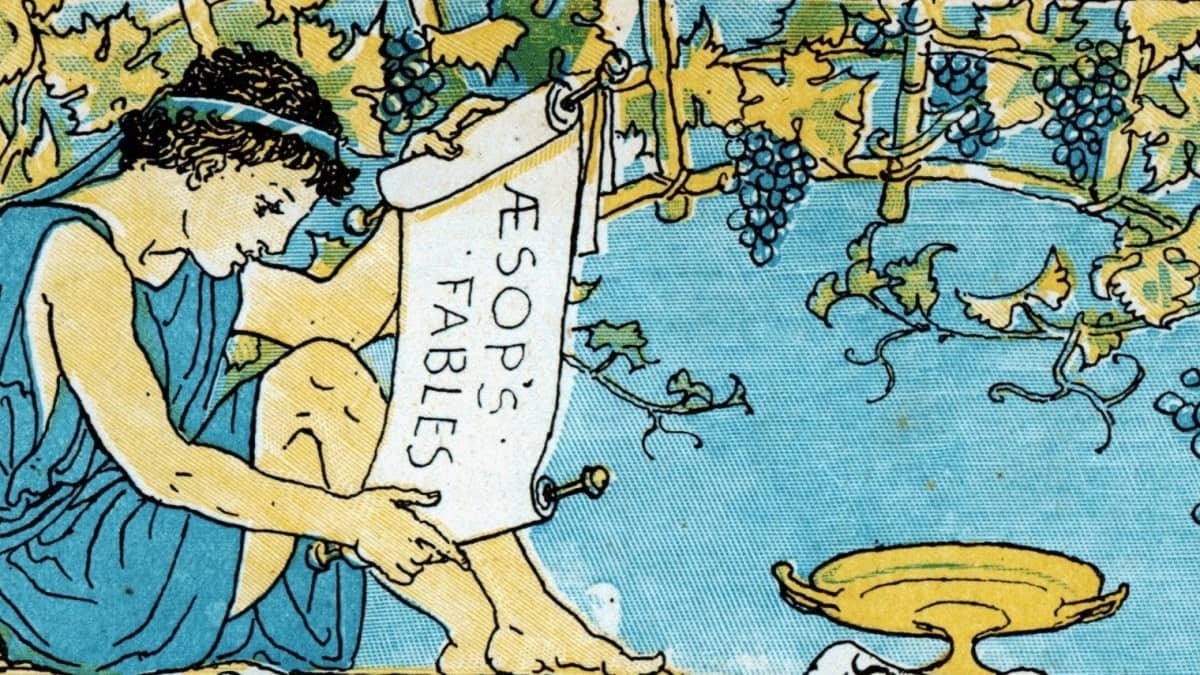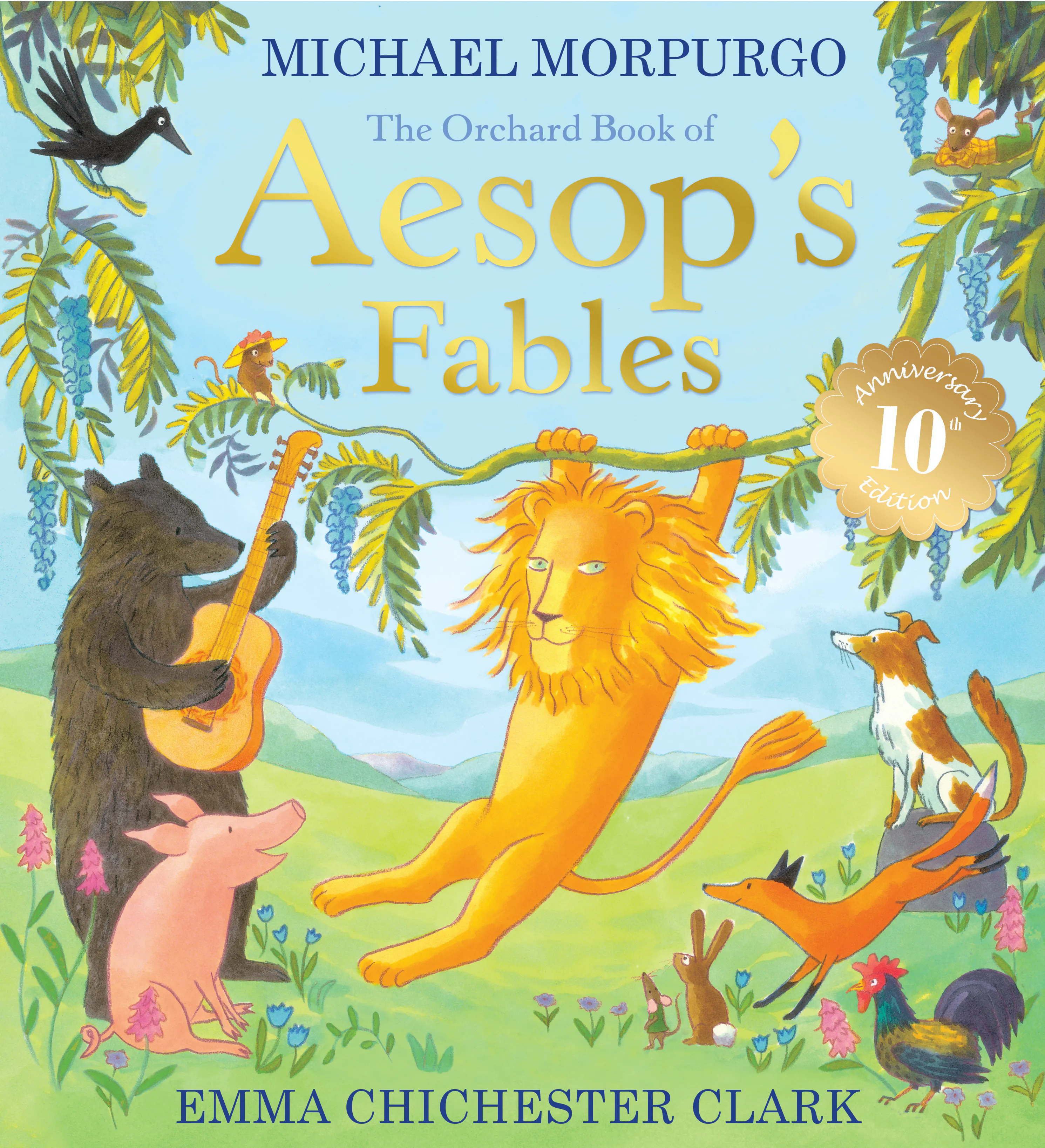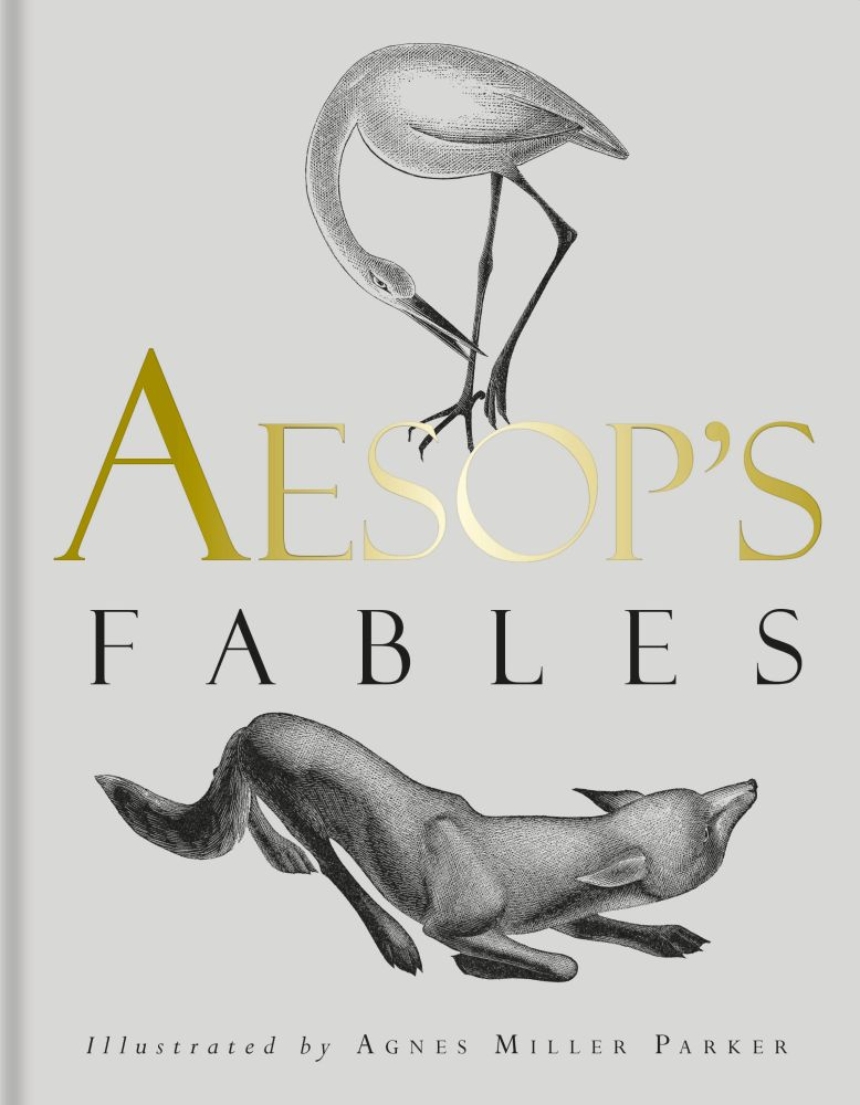[Aesop's Fables] Aesop's Fables Origin, History, Educational Lesson, Kind, Plot Summary

Aesop's Fables ( Ancient Greek Αισώπου Μύθοι, English Aesop 's Fables), or Aesopica, is a collection of fables written by Aesop , a slave and storyteller in Ancient Greece . Isophos is also commonly known as Aesop . Aesop's Fables are also short stories featuring anthropomorphic animals .
Aesop's fables are a popular textbook for moral education for children around the world today in that they contain familiar animals and lessons . The first Korean translation is said to have appeared in the first new textbook, Shinjeongsimsangsohak , made with the help of Japanese in 1895. Seven Aesop's fables were introduced under the title " New Stories " .
1. Representative stories (in Perry index order) - Aesopus moralisatus, 1485
- Perry No. 46 . " North Wind and Sun "
- Perry number 65 . " The Bear and the Traveler "
- Perry number 150 . " Lion and Mouse "
- Perry number 173 . " Gold Ax Silver Ax "
- Perry number 176 . " The Farmer and the Viper "
- Perry number 210 . " Shepherd Boy "
- Perry number 226 . " Rabbit and the tortoise "
- Perry number 352 . " The Country Mouse and the City Mouse "
- Perry number 373 . " Ant and Grasshopper "
- Perry number 426 . " Fox and Crane "
- Perry number 613 . " Put a bell on the cat 's neck "

2. Synopsis of Aesop's Fables
(One). north wind and sun
The north wind blew hard , trying to take off the stranger's shirt, but he pressed it against his shirt . The sun was victorious because the traveler took off his shirt as the sun was shining brightly . The North Wind and the Sun is one of Aesop's fables . By Perry 's index , it corresponds to fable number 46 .
- summary
One day , the north wind and the sun battled over whether to take off the top of a stranger passing by . First , the north wind blew hard , trying to take off his shirt . However , the north wind could not take off the stranger's clothes because the stranger, who hated the cold, pressed down on the jacket he was wearing . Then the sun was shining brightly . Then the traveler endures the heat He couldn't help but take off the shirt he was wearing . In this way , the sun wins the battle of strength .
- Lesson
- You can achieve great results by doing things slowly and steadily rather than rushing them quickly .
- If you try to move people with a cold and harsh attitude, you will become arrogant . On the other hand, if you move people with a warm and friendly attitude, they will act on their own .
- Nothing in this world can be achieved by power or dictatorship .
(2). bear and traveler
The Bear and the Traveler is one of Aesop's fables . By Perry 's index , it corresponds to fable number 65 .
- summary
One day , two men were traveling . As the two men were walking on a path in a large forest , a bear appeared in front of the two men . One man climbed up a large tree nearby, but the other man did not escape and fell to the ground and pretended to be dead . The bear was putting its mouth on the man's ear, but after a while it disappeared into the woods . . The man who ran away from the tree came down with peace of mind . The man who ran up the tree said to the man who could n't escape , " I think the bear whispered something in your ear . What did you say ? " I asked , and the man said, " Would you like to break up with a hard-working person who abandons his friend in a dangerous situation and runs away only for himself ? " said . _
- Lesson
- In a dangerous situation, you should not abandon your friends and run away alone .
(3). lion and rat
This is a story about a lion and a mouse . The Lion and the Mouse is one of Aesop's fables . By Perry 's index , it corresponds to fable 150 .
- summary
The mouse caught by the lion goes away while begging for its life . The mouse promises something in return, but the lion looks down on the mouse and forgets to repay his favor . However , when the lion is caught in the net, the mouse rips the net and saves the lion .
- Lesson
- Even if it is small , the kindness you give to others returns to you .
- Situations may arise where the strong need the help of the weak .

(4). gold ax silver ax
The golden ax and the silver ax (金―銀― ) or Hermes and the Cunning Woodcutter is one of Aesop 's fables , Perry Index No. _ _ _ _ What I want to show in this story is the victory of honesty or goodness , and the honest and the dishonest , that is , the good and the evil 2 The principle, contrast, clearly reveals the didactic intent to act honestly by allowing the latter to fail . On the other hand, rather than the source or origin of Aesop's fables as didactic fables with such plots, considering that similar old stories have been handed down in Nigeria , Thailand , and Tibet , the view that Aesop's fables influenced these stories is more valid . can be said to have _
- summary
A woodcutter who was cutting wood in the mountains accidentally dropped his ax into a pond . No matter how hard he tried to rescue the ax, he could n't . While feeling discouraged , Hermes appeared and said, “Is this golden ax yours ? ' he asked . Then the woodcutter said, “ No. ” he replied . Again Hermes said, “Is this silver ax yours ? ', but the woodcutter said again , " No. ' and said, "My ax It is an iron ax . ” he said . Then Hermes said, “You are right,” and gave all three axes to the woodcutter . On the other hand, the greedy and deceitful woodcutter hears this news and tries to get a gold and silver ax in the same way , but Hermes finds out about his scheme and rebukes him . In Korea , Hermes was changed to a mountain god , It seems to have settled down as a Korean story as it was translated and recorded .
- plot
Another interpretation of the ' gold ax and silver ax ' is to present it as a symbol of ' power ' as the meaning of the ax ( Fasces ) , and those in the position of consensual summation of power or those in the position of consensual summation of power It seems to imply the premise that he recognizes his qualifications as a person who will receive concentration of power as a person who knows his fraction and has the will to harmonize the balance of power . .
(5). farmer and viper
" The Farmer and the Viper " is one of Aesop's fables , Perry Index number 176 . The story begins when a farmer finds a poisonous snake freezing to death in the snow . The farmer takes pity and picks up the viper and puts it in his clothes . The viper , revived thanks to the warmth , bites the farmer . As the farmer dies, he shouts that he should have known this . In another version, the farmer Bring the viper home and make it your children's pet . When the snake bites the children, the farmer cuts off the snake's head . The lesson of this parable is that kindness to evil is in vain .
(6). shepherd boy
The Shepherd Boy is one of Aesop's fables , number 210 in the Perry Index .
- summary
The boy who tended the sheep said , " A wolf has appeared !" lie and cause a commotion . The grown -ups in the village are tricked by the boy's lies and bring weapons, but in vain . The shepherd boy repeats this lie many times . Eventually , one day, a wolf really appeared and the shepherd boy reported the news, but the adults no longer believed the shepherd boy . No one went to help . Eventually all the sheep of the shepherd boy are eaten by the wolf .
- Lesson
If a person continues to lie many times , they will not be able to believe others even if they tell the truth later . If you live your life honestly , you can get trust and help from others when you need it .

(7). rabbit and tortoise
The hare and the tortoise or the tortoise and the hare is a fable from Aesop 's fables , Perry index number 226 .
- summary
Once upon a time , there lived a hare and a tortoise . The rabbit was very fast and the tortoise was very slow . One day , when the rabbit made fun of the tortoise for being sluggish , the tortoise was stimulated and offered the rabbit a running race . After starting the race, the rabbit sees that the tortoise is far behind and takes a nap in the middle . But when the rabbit sleeps for a long time, the tortoise passes the rabbit . The rabbit suddenly wakes up and realizes that the tortoise has overtaken him and runs quickly , but the result is the tortoise's victory . This is a story containing the lesson that " those who work slowly wins " . These lessons remind us that we should try not to live in vain .
As such , the hare and the tortoise are an old fairy tale that teaches a lesson . The rabbit symbolizes a person who is smart but lazy , and the turtle symbolizes a person who is not smart but sincere . Often used as a discussion in elementary school . However, in the West , there are cases where the turtle is worse because it is not fair because the tortoise just ran after seeing the rabbit .
And there is a similar story called Byeoljujeon . In Rabbit Battle, Zara appears instead of the tortoise , and although she was tricked by the clever rabbit at the end, the dragon king fell ill and came to the land to save the rabbit's liver and bring it to the land, showing the loyalty of the rabbit . On the other hand, even there , the rabbit appears like a bad protagonist who deceives the Dragon King and angers Zara in order to avoid his own death .
In other words , when rabbits and tortoises or rabbits and Zara appear , in common , rabbits appear to be stupid or bad . On the other hand, turtles and Zara , which are sometimes inferior to rabbits , are loyal and loyal, or appear as diligent and faithful protagonists without laziness .
(8). country mouse and city mouse
The Country Mouse and the City Mouse is one of Aesop's fables . The Perry index corresponds to fable 352 . In a work translated into Korean , it appears under the title 《The Country Mouse and the Seoul Mouse》 .
- summary
One day , a rat from the countryside invited a rat from the city . The two mice were eating the crops in the fields, but the city mouse said to the country mouse : " Country mouse , why do you live in such a boring life ? Why do n't you come to the city where I live ? Then you can eat amazing foods to your stomach ."
The country mouse went with the city mouse to the city street where the city mouse lived . When a city mouse arrived at a building in the city, it showed food that the country mouse had never seen before . The country mouse said that thanks to the return of the city mouse , he was eating delicious food . At this time, someone opens the door and the country mouse and the city mouse run away to find a narrow hole .
When the country mouse and the city mouse try to eat again , someone else comes in . The country mouse said to the city mouse, " I have prepared such a wonderful sacrament, but I hate that there are so many dangers . It is right for me to eat in the fields . I can live there safely and without fear ." saying , he prepares to go back in haste .
(9). ant and grasshopper
The Ant and the Grasshopper is one of Aesop's fables , offering a ambivalent moral lesson about foresight to plan and work for the future . By Perry 's index , it is fable number 373 . This fable tells the story of an ant gathering food for winter and a grasshopper who spent time singing during the warm season . When winter comes , the grasshopper is starving, begging for food from the ants, and the ants are the grasshopper's accuse laziness _

(10). fox and crane
The Fox and the Crane is one of Aesop's fables . The Perry index corresponds to fable 426 .
- summary
The grumpy fox said to the crane , " I 'll give you a bite , so come here . " , and invited her crane to her house . The fox deliberately served soup on a flat plate to her crane . She could n't eat the soup because the crane has a long beak . The fox saw this and ate the soup deliciously .
After a while , the crane said to the fox, " Thank you for treating me well in the past . This time I 'll give you a bite , so come on over ." Saying that, she invited the fox to her house . The crane deliberately offered the fox the soup in her long -mouthed bottle . Because the fox has a short mouth , he could n't eat the soup . The crane saw this and ate her soup deliciously .
(11). put a bell on the cat 's neck
Placing a bell around a cat 's neck is a story from Aesop 's fables . The fable's Perry index is 613 , which is classified as a story added in the Middle Ages .
- summary
The cat chased the mice , and the mice discussed what to do with the cat . Many methods have been proposed , but have not been adopted . Finally , a method of putting a bell around the cat 's neck was proposed . All the rats said it was a good idea . Then the old mouse asked how to put a bell around the cat 's neck, but no one answered .
- Lesson
The moral of this story is often mentioned two things :
- Proposing and implementing are two different things .
- Words are easier than actions.
'I. 인문학 (Humanities) > 9- 스토리텔링 (Story Telling)' 카테고리의 다른 글
| [Star Wars Series] Obi-Wan Kenobi Disney Plus New Release! (1) | 2022.07.28 |
|---|---|
| [Naver Web Novel] What is Naver Web Novel, Becoming a Web Novel Writer, Serialization Method Summary (0) | 2022.07.28 |
| [스타워즈] 디즈니플러스 추천작, 북오브보바펫!! (0) | 2022.05.12 |
| [스타워즈] 만달로리안_ 디즈니+의 최고작 (0) | 2022.05.12 |
| [스타워즈 시리즈] 오비완캐노비 디즈니플러스 신작 출시! (0) | 2022.05.11 |




댓글